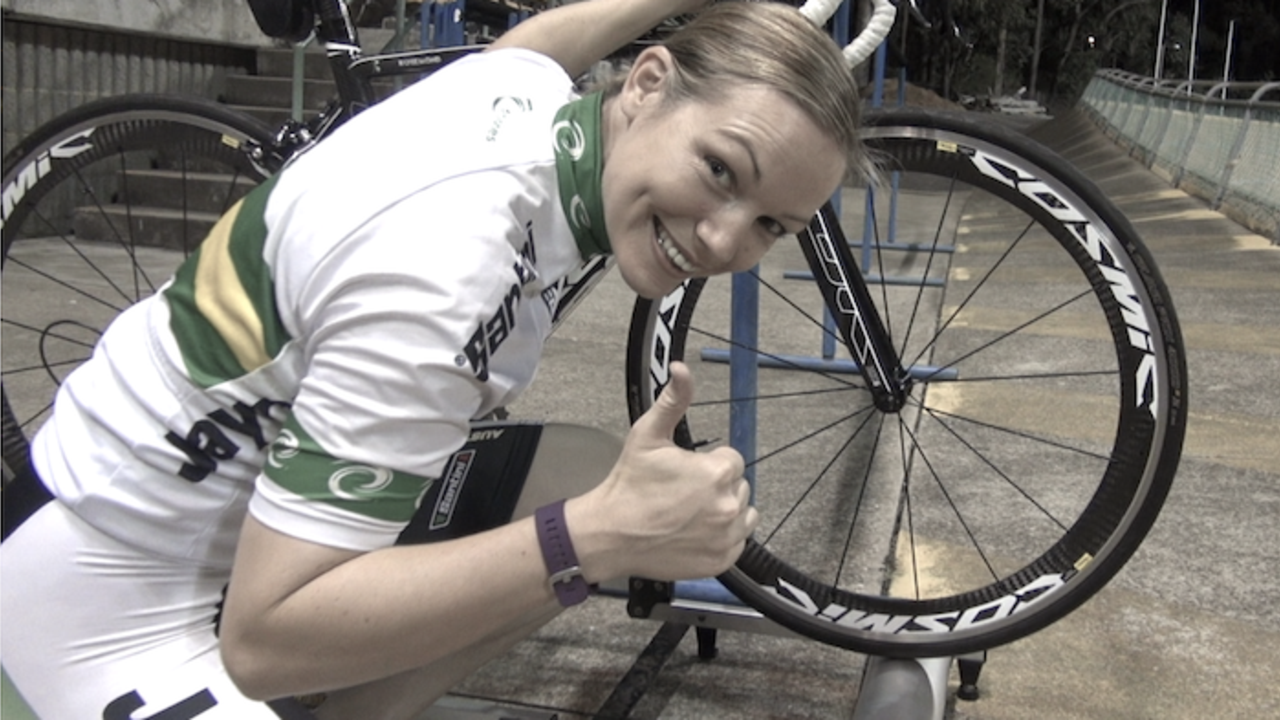How to Ride the Rollers

So you’ve just bought a brand new set of rollers after reading just how beneficial they are in our previous blog on Why Learning How to Cycle on Rollers is SO IMPORTANT.
Welcome to a whole new territory of riding!
There’s nothing quite like being able to roll your legs, with limited resistance in between races or training efforts.
The rollers are a great tool for warm up, training and recovery.
Whilst they might seem like a fairly complicated task for a newbie, with practice it’s very achievable to ride the rollers.
Here's a quick video on how to master the rollers, and the step by step instructions are below.
To start with it is a good idea to find a friend to stand next to you who can hold onto your seat/bike for the first few times whilst you try out the rollers.
This can provide additional support with balance until you feel confident riding on your own or when you are comfortable pedaling whilst holding onto a wall/support independently.
But just a WARNING to the unwary mates who stand too close to the rider on the rollers....
...you may get zapped from the static energy that is generated when they ride! ;-))
Here are our top 9 tips to help you become a master at riding the rollers.
Tip 1:
Ensure that you set your rollers up in a location where it’s safe, free from high winds, and importantly flat terrain.
It’s difficult to ride the rollers when you’re on a banked road, or steep driveway, so find yourself some flat ground or hard surface (preferably not grass or any soft surface) and set yourself up.
Tip 2:
It’s also important that you have something to hold onto when you’re getting on, off and for the “just in case” you need to grab onto something for balance whilst riding.
This can be leaning up next to a wall, using a post or a support that is stable.
If you are concerned in any way, wear your helmet to be safe.
Tip 3:
Before getting onto the rollers for the first time, consider the length you need to set your rollers.
A good indication that you've got the right length is that the hub of your front wheel sits directly over the top of the front barrel of the rollers.
If it falls any shorter or longer, it will affect your balance on the rollers when riding.

Tip 4:
When you’re riding on the rollers, especially when getting on and off them, it’s really important that you switch on your core and glute muscles.
Having these stabilising muscle groups activated will help you maintain a your balance and give you greater bike control.
Tip 5:
When you start pedaling on the rollers, make sure you have your road or track bike in a relatively small to moderate gear.
Tip 6:
Start with your hand positions on the tops of your bars (as opposed to being in the drops).
When you find you’ve got your balance right, continue to pedal and focus on relaxing - if you’re tense, it makes it harder to ride in the middle of the rollers when pedaling.
Take deep breaths, and focus on achieving a comfortable cadence.

Tip 7:
When you have achieved riding independently with both hands on the handle bars, GREAT WORK!!!
The next step is changing from the top of the bars and down into the drops.
When performing this exercise, make sure your core is switched on first, and MAINTAIN your cadence throughout the change in hand positions.
If you're concentrating on your hand position it can be easy to lose concentration on your cadence and as a result you will start to slow down.
This can cause you to lose balance.
Therefore, start by maintaining a comfortable cadence, change one hand first, wait a few seconds to to keep your stability in check and keep the cadence steady, then follow with the other hand.
Practice moving from the top of the bars to the drops, and back again a few times until you can achieve repeat smooth transitions whilst maintaining a steady balance.
Before you know it, you will be riding no hands.
Tip 8:
If you find yourself bouncing on the seat, make sure that your stabilising muscle groups are activated.
Your core will help transfer power and speed to your pedals, and your gluteus will help maintain stability on your seat.
Because the rollers provide minimal resistance you shouldn't need to do as much pushing in your pedal stroke.
As you increase your cadence on the rollers, focus more on the rake and lift components. (You can learn more about the 4 pedal phases in Kerrie's free video).
This will help minimise bouncing and help you achieve higher pedalling speeds.
Tip 9:
Over time you will be able to start including some high cadence efforts in your sessions.
These types of efforts on the rollers are a great way to get your neural systems firing which offer significant benefits in developing your pedaling efficiency.
Conclusion:
The rollers are an excellent training tool.
They make it easy to complete your warm ups, warm downs, and pre-race efforts for an event.
Whilst learning to ride them can be a great challenge, the bike skills you develop on the rollers transfer over to when you are riding your bike on the velodrome, road, MTB tracks, Cyclocross, BMX and Roller Derby racing.
Leave us a comment below and let us know about your experience with riding the rollers.


